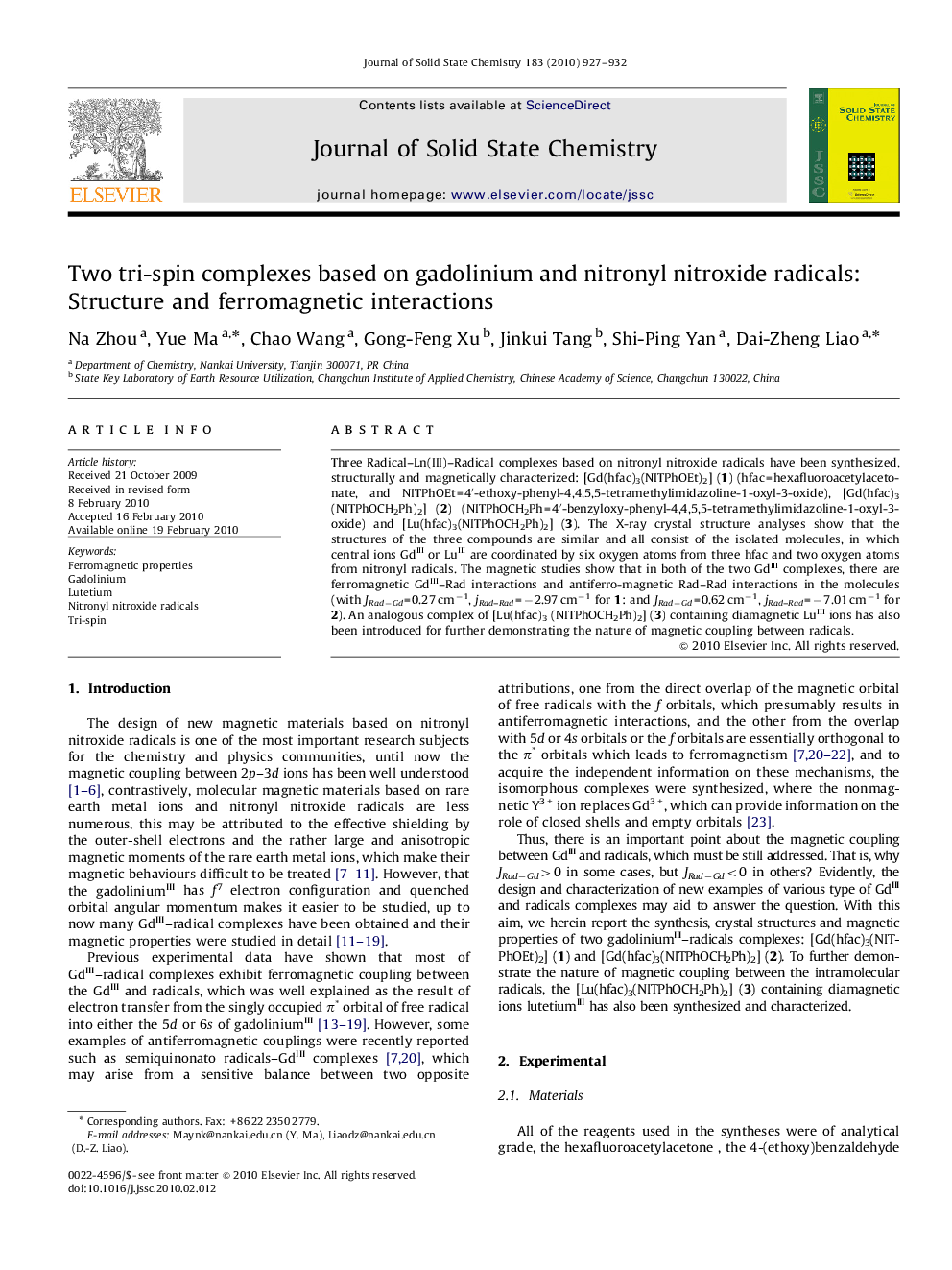| Article ID | Journal | Published Year | Pages | File Type |
|---|---|---|---|---|
| 1329169 | Journal of Solid State Chemistry | 2010 | 6 Pages |
Three Radical–Ln(III)–Radical complexes based on nitronyl nitroxide radicals have been synthesized, structurally and magnetically characterized: [Gd(hfac)3(NITPhOEt)2] (1) (hfac=hexafluoroacetylacetonate, and NITPhOEt=4′-ethoxy-phenyl-4,4,5,5-tetramethylimidazoline-1-oxyl-3-oxide), [Gd(hfac)3(NITPhOCH2Ph)2] (2) (NITPhOCH2Ph=4′-benzyloxy-phenyl-4,4,5,5-tetramethylimidazoline-1-oxyl-3-oxide) and [Lu(hfac)3(NITPhOCH2Ph)2] (3). The X-ray crystal structure analyses show that the structures of the three compounds are similar and all consist of the isolated molecules, in which central ions GdIII or LuIII are coordinated by six oxygen atoms from three hfac and two oxygen atoms from nitronyl radicals. The magnetic studies show that in both of the two GdIII complexes, there are ferromagnetic GdIII–Rad interactions and antiferro-magnetic Rad–Rad interactions in the molecules (with JRad−Gd=0.27 cm−1, jRad–Rad=−2.97 cm−1 for 1: and JRad−Gd=0.62 cm−1, jRad–Rad=−7.01 cm−1 for 2). An analogous complex of [Lu(hfac)3 (NITPhOCH2Ph)2] (3) containing diamagnetic LuIII ions has also been introduced for further demonstrating the nature of magnetic coupling between radicals.
Graphical abstractTwo tri-spin complexes based on gadolinium-radical have been synthesized and characterized, the magnetic studies show that in the two complexes the Gd–radical interaction is ferromagnetic and the radical–radical interaction is antiferromagnetic. An analogous complex containing the diamagnetic LuIII ions has also been synthesized to further demonstrate the nature of the magnetic coupling between radicals.Figure optionsDownload full-size imageDownload as PowerPoint slide
